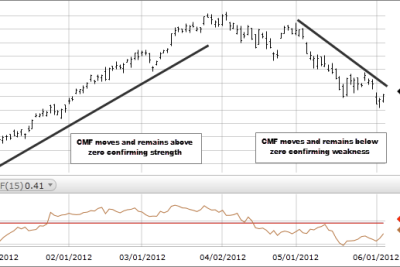
Apache Monitoring: Definition, Facts, and Key Insights

In the ever-evolving landscape of web technologies, Apache monitoring plays a crucial role in ensuring the stability and performance of web applications. As one of the most widely used web servers, Apache supports a significant portion of the internet, making its efficient monitoring essential for web administrators. Effective Apache monitoring helps to maintain server health, optimize resource use, and enhance user experience by identifying potential issues before they escalate into major problems.
This article delves deep into the realm of Apache monitoring, exploring its definition, importance, key metrics to keep an eye on, and the best tools available for the task. By understanding these concepts, organizations can significantly improve the performance and reliability of their web applications, thus sustaining their digital presence in a competitive market.
What is Apache Monitoring?
Apache monitoring refers to the processes and tools used to supervise the performance and health of Apache web servers. This includes the collection and analysis of data about server metrics, user activity, and overall functionality. By monitoring these aspects, administrators can detect anomalies, troubleshoot issues, and optimize server configurations to ensure improved performance.
Importance of Monitoring Apache Servers
The importance of monitoring Apache servers cannot be overstated. In an era where website performance directly correlates with user satisfaction and retention, robust monitoring practices play a vital role in maintaining a competitive edge. Here are several critical reasons why Apache monitoring is essential:
- Proactive Issue Detection: Regular monitoring helps identify issues before they affect users, enabling quick responses to potential problems.
- Performance Optimization: By analyzing metrics, administrators can fine-tune server configurations for optimal performance.
- Resource Management: Understanding resource utilization assists in planning for scaling and efficient management of server capacities.
- Security Oversight: Monitoring can identify unusual patterns that may indicate security breaches, allowing for timely intervention.
Key Metrics to Monitor in Apache
When engaging in Apache monitoring, it is essential to focus on key metrics that provide valuable insights into server performance and user behavior. Here are some of the critical metrics to monitor:
1. Request Rate
The request rate indicates the number of requests the server handles per second. Monitoring this metric helps in evaluating the server's load and identifying peak usage times.
2. Response Time
This metric measures the time it takes for the server to respond to a request. High response times can indicate underlying performance issues, such as server overload or poor application tuning.
3. Error Rates
Tracking error rates, including 404 errors and 500 server errors, helps identify broken links or problematic configurations. A sudden spike in errors can alert administrators to critical issues needing immediate attention.
4. Resource Utilization
Monitoring CPU, memory, and disk usage is crucial for understanding the overall health of the server. High resource utilization can lead to performance degradation and should be addressed promptly.
5. Traffic Analysis
Understanding where traffic is coming from and how it behaves on the site is essential. Analyze metrics like the geographical distribution of users, referral sources, and popular pages to make data-informed decisions.
Tools for Apache Monitoring
Numerous tools are available for Apache monitoring, each offering various features that cater to different monitoring needs. Here’s a summary of some popular tools:
1. Apache Access Logs
The Apache server generates access logs that provide detailed information about client requests. Analyzing these logs allows admins to track traffic patterns, user behavior, and error messages.
2. Nagios
Nagios is a powerful open-source monitoring tool that provides comprehensive server monitoring capabilities. It can track server metrics and send alerts based on defined thresholds, making it easier to manage server health.
3. Zabbix
Zabbix is another open-source monitoring solution offering extensive features, including performance metrics retrieval, visualization, and customizable alerts, helping maintain a healthy Apache environment.
4. Prometheus and Grafana
Prometheus is designed for monitoring and alerting dynamic systems, and when paired with Grafana, an excellent visualization tool, it provides impactful insights into server performance.
Best Practices for Effective Apache Monitoring
Implementing effective Apache monitoring involves adopting several best practices that ensure system reliability and resource optimization:
- Set Clear Goals: Determine what you want to achieve with your monitoring. Focus on key performance indicators and set realistic targets.
- Create Alerts: Set up alerts for critical issues like high error rates or CPU usage, enabling quick responses to potential problems.
- Regularly Review Metrics: Periodically analyze metrics to identify trends and patterns that inform better decision-making.
- Combine Monitoring with Logging: Supplement monitoring with logging to get a fuller picture of performance issues and user behavior.
Common Issues Detected by Apache Monitoring
Through effective Apache monitoring, several common issues can be detected and addressed:
1. Performance Bottlenecks
Monitoring can reveal points of congestion in the system, such as slow database queries or inadequate resource allocation, allowing for timely adjustments.
2. Configuration Errors
Issues such as misconfigured virtual hosts or incorrect permissions can lead to significant operational challenges. Monitoring helps identify these errors quickly.
3. Security Threats
Unusual patterns noted during monitoring activities can indicate security breaches, alerting administrators to potential threats that need immediate attention.
4. Resource Limits Reached
Monitoring helps to foresee potential resource exhaustion, which may lead to outages, giving system administrators the chance to scale resources accordingly.
Conclusion
In conclusion, Apache monitoring is an integral part of maintaining the health and performance of web applications powered by Apache servers. Through the continuous assessment of key metrics, effective usage of monitoring tools, and implementing best practices, organizations can enhance the reliability of their web presence and ensure the optimal user experience.
By investing time and resources into an effective Apache monitoring strategy, web administrators can be confident in their ability to detect potential issues, optimize performance, and secure their web applications against emerging threats, ultimately supporting the ever-growing need for reliable internet services.
Did you find this article helpful? Apache Monitoring: Definition, Facts, and Key Insights See more here Education.
Leave a Reply






Related posts